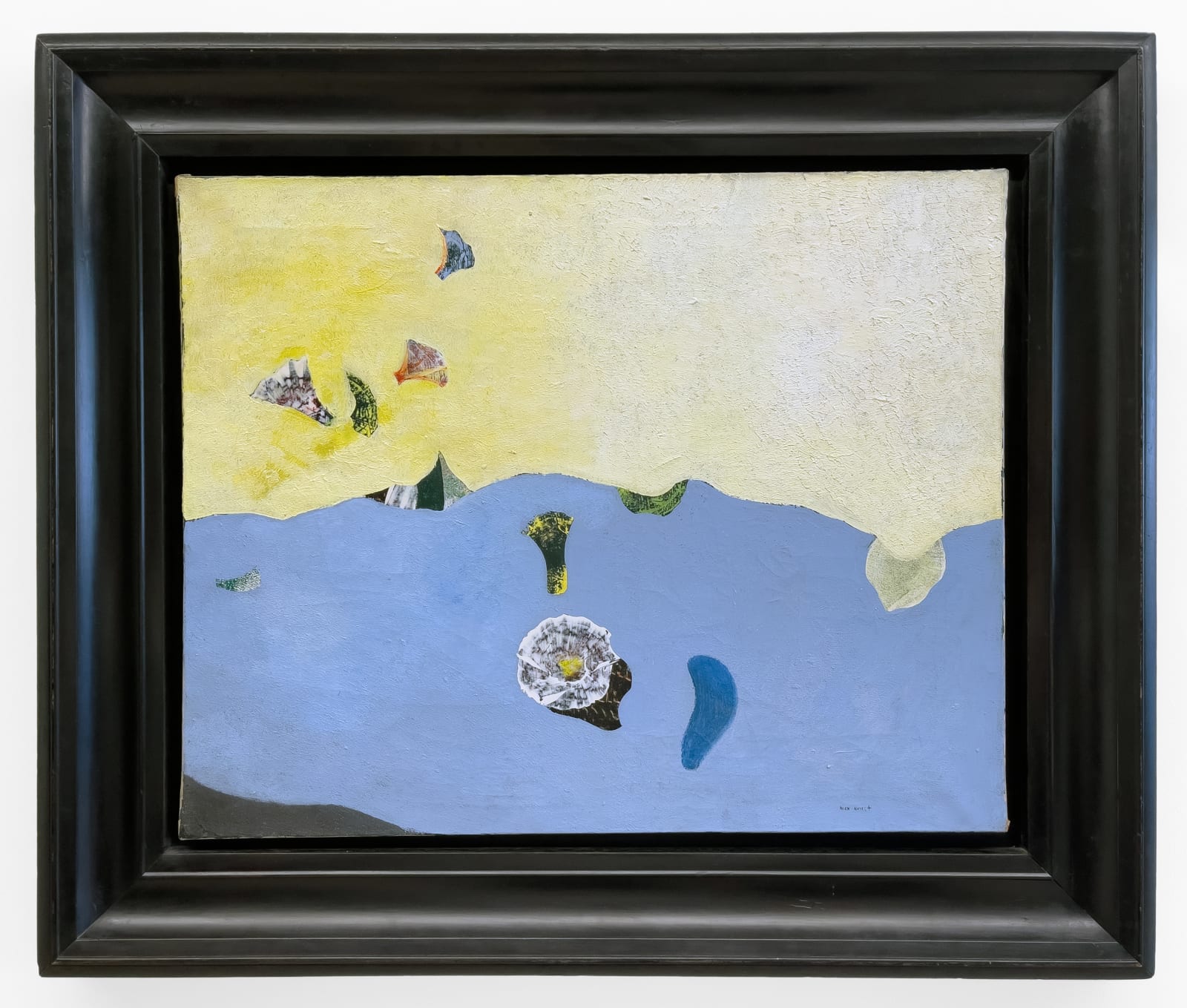
Max Ernst Germany, 1891-1976
Paysage aux coquillages, c.1927-1928
oil on canvas
64.8 x 81 cm | 25 1/2 x 31 7/8 in
framed: 90 x 105.5 x 5 cm
signed at the bottom right 'Max Ernst'
Certificate of Authenticity by Werner Spies dated January 21th, 2009.
framed: 90 x 105.5 x 5 cm
signed at the bottom right 'Max Ernst'
Certificate of Authenticity by Werner Spies dated January 21th, 2009.
Max Ernst’s Paysage aux coquillages (1927–1928) presents a dreamlike and surreal landscape that bridges the artist’s earlier frottage explorations and the beginning of his fleurs coquillages (shell-flowers) series. The painting...
Max Ernst’s Paysage aux coquillages (1927–1928) presents a dreamlike and surreal landscape that bridges the artist’s earlier frottage explorations and the beginning of his fleurs coquillages (shell-flowers) series. The painting is horizontally divided, with a textured yellow upper third evoking a sunlit coastal expanse and a rich blue lower section reminiscent of a tranquil sea. At the center of this blue area lies a prominent hybrid form—part shell, part flower—that signals Ernst’s fascination with invented organic structures existing between the animal, vegetable, and mineral realms.
This work is among the first unconscious products of Ernst’s grattage technique, developed in 1926–1927. Grattage involved scraping layers of paint over textured surfaces, revealing patterns that sparked spontaneous, hallucinatory imagery. The textures suggested clam-like flowers to Ernst, which became central elements in his compositions. In Paysage aux coquillages, these early experiments culminate in a luminous, enigmatic scene that anticipates the more flamboyant floral works he would produce in the following year.
The painting also reflects a period of personal contentment for Ernst. In 1928, having recently dedicated himself fully to his art and begun a new life with Marie-Berthe Aurenche, Ernst found joy in an unconventional and loving relationship that resonated with his Surrealist circle. This emotional shift is evident in the poetic and romantic quality of the painting. As he wrote in his biographical notes, flowers, birds, mountains, and stars all morphed into one another, suggesting a world animated by transformation, love, and imagination.
This work is among the first unconscious products of Ernst’s grattage technique, developed in 1926–1927. Grattage involved scraping layers of paint over textured surfaces, revealing patterns that sparked spontaneous, hallucinatory imagery. The textures suggested clam-like flowers to Ernst, which became central elements in his compositions. In Paysage aux coquillages, these early experiments culminate in a luminous, enigmatic scene that anticipates the more flamboyant floral works he would produce in the following year.
The painting also reflects a period of personal contentment for Ernst. In 1928, having recently dedicated himself fully to his art and begun a new life with Marie-Berthe Aurenche, Ernst found joy in an unconventional and loving relationship that resonated with his Surrealist circle. This emotional shift is evident in the poetic and romantic quality of the painting. As he wrote in his biographical notes, flowers, birds, mountains, and stars all morphed into one another, suggesting a world animated by transformation, love, and imagination.
Provenance
Parlier collection, acquired directly from the artist.Acquired directly from the descendant in 2009.
Exhibitions
Albtraum und Befreiung. Max Ernst in der Sammlung Würth, Kunsthalle,Schwäbisch Hall,
16.10.2009 - 2.5.2010.
Literature
Albtraum und Befreiung. Max Ernst in der Sammlung Würth, Ed. W. Spies et C. S. Weber, Swiridoff Verlag Künzelsau 209, p. 9 repr. coul.
Join our mailing list
* denotes required fields
In order to respond to your enquiry, we will process the personal data you have supplied to communicate with you in accordance with our Privacy Policy. You can unsubscribe or change your preferences at any time by clicking the link in our emails. This site is protected by reCAPTCHA and the Google: Privacy Policy and Terms of Service apply.